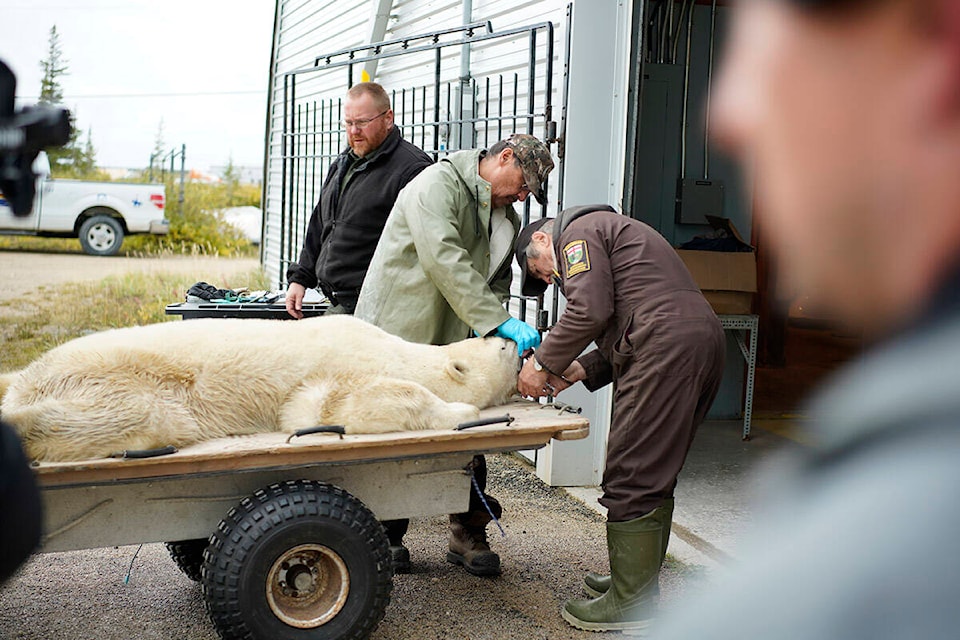Polar bear root canals, muskox waking up early from anesthesia and surgery on grey wolves – it doesn’t matter how good their bedside manner is, wildlife veterinarians rarely see cooperative patients.
A documentary series on CBC called Arctic Vets is sharing the behind-the-scenes on how wildlife doctors care for their patients. In the second season of the show, Dr. Chris Enright and his team travel up to the Yukon, Alaska, Manitoba and Ontario to help treat northern animals.
“These are a group of animals that most Canadians have a concept of, but unfortunately, don’t get to experience up close, especially Canadians living in the South,” said Enright.
The second season of Arctic Vets premiered on Jan. 7, beginning with a polar bear root canal in Winnipeg. Later on, the series will travel to the Yukon Wildlife Preserve and the Alaska Wildlife Conservation Center.
In the episode set at the Wildlife Preserve, a recent veterinary graduate works alongside Yukon veterinarian Maria Hallock, caring for the preserve’s array of northern animals.
“She benefits from Dr. Maria’s expertise and the facilities there and really encounters the same challenges of providing veterinary care to the wildlife under a number of circumstances,” said Enright. “You can learn about some of the neat things that are happening in your backyard at the wildlife preserve.”
The challenges of treating wildlife are, of course, a little different than caring for our cats and dogs at home.
“The first is that wildlife will, under some circumstances, develop positive relationships with people, but they don’t fully understand that veterinarians are there to help them,” said Enright. “With my dog or cat at home, I can look in their mouth, I can feel their body, but often with wildlife they don’t let us do all of those sorts of things.”
In the second season’s first episode, Enright and his team find themselves looking at the mouth of a creature with some pretty fearsome teeth – for a root canal on an orphan polar bear.
“The best treatment for this bear was to bring in a veterinary dentist and do a root canal. So we were able to collaborate and provide a difficult patient – if you will – with a really high level of care. That’s sort of our day-to-day, it’s certainly not just for the purposes of the series. This is what goes on every day. So we’re just kind of able to lift the curtain a little bit and show it.”
Season one of the show focused primarily on Manitoba, in Winnipeg and Churchill. Enright is the head veterinarian at the Assiniboine Park Conservancy, which includes a zoo exhibit specialising in polar bears, among other northern creatures.
The first season follows surgery on grey wolves, injured belugas, human-wildlife conflict with bears and an electrocuted eagle.
Beyond the wildlife facilities in the Yukon and Alaska, the second season of the series will also travel to Winnipeg and Ontario. Along the way, the team of veterinarians tag Arctic harbour seals, perform health checks on young reindeer and caribou and help out an Arctic fox recovery program.
“We have everything from bison making an appearance to some reindeer, some thinhorn sheep. We have some birds – sandhill cranes and owls. There’s definitely an array of patients that we encounter through the year and the series really kind of captures that,” he said.
“I really enjoy the opportunity to share our enthusiasm and some of the stories of living alongside wildlife and finding ways that people across Canada can take action to help ensure that there’s still [northern] wildlife to live alongside in the next 50- to 100-plus years.”
Contact Haley Ritchie at haley.ritchie@yukon-news.com
